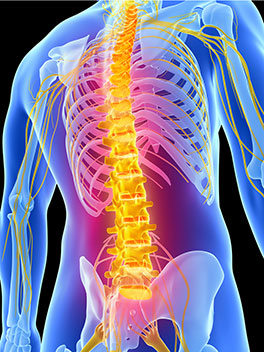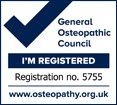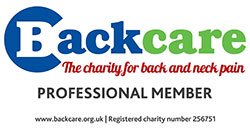Nerve Pain Chelmsford
Nerve pain can occur when peripheral nerves or individual nerve roots where they emerge from the spine become irritated, compressed or inflamed. This type of nerve pain is sometimes referred to as entrapment neuropathy, compression neuropathy or nerve root compression.
Sometimes pain can mimic nerve pain. Patients may have pain into their arm or leg which can be referred by muscle spasms or an irritated joint in the back or neck. This is different to direct nerve pain, but can still be very painful.
What Does Nerve Pain Feel Like?
- Pain can be felt at the source of the problem
- Pain can refer away from the source into the arm & hand,
or into the leg & foot - Pain can be shooting
- Pain can be throbbing
- Pain is often constant
- Pain can be described as an "electric shock"
- There may be pins & needles
- There may be numbness
- There may be weakness

What causes “trapped nerves”?
Nerves can be compressed or irritated where the nerve roots emerge from the spine. Pain may then be felt along the pathway of a particular nerve root, often either in the arm or leg. This can be caused by many problems including disc problems, inflamed muscles, inflamed ligaments or stenosis caused by spondylosis in the spine. It can happen without an obvious trigger, or after an injury. Nerves can also be compressed by muscles or other soft tissues further away from the spine going into the arm, shoulder, buttock or leg.
Some common examples include: sciatica, femoral nerve compression, lumbar nerve root compression particularly at L4 & L5, cervical nerve root compression particularly C5-7, neurological thoracic outlet syndrome, carpal tunnel syndrome, tarsal tunnel syndrome and peroneal nerve compression.
How can osteopathy help?
Occasionally there may be an underlying medical cause of nerve pain. Osteopaths are trained to take a full medical history along with details of your symptoms before examining you thoroughly to enable them to differentiate nerve pain that they are able to help with versus that which may need onward medical referral.
At Oaklea Osteopathy in Chelmsford, treatment will depend on your diagnosis and other factors such as age, general health and fitness. Treatment is carefully chosen to reduce pain, improve mobility, improve function and improve strength. Where appropriate you may be provided with gentle exercises to help your recovery.
Occasionally, there may be a need to refer you back to your GP if Amanda thinks you may benefit from further investigation or tests. Amanda will always discuss this with you first if she thinks this is necessary.
Useful Links
NHS – Sciatica
NHS - About Sciatica






